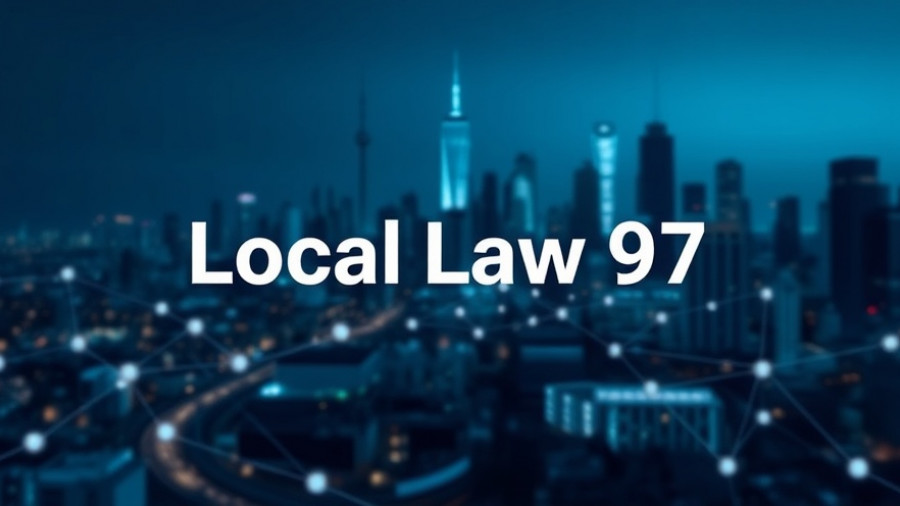
Understanding Local Law 97: A Path to Smaller Carbon Footprint
As the world grapples with climate change, New York City is standing out with its commitment to reducing greenhouse gas emissions through proactive legislation. Local Law 97, enacted as part of the Climate Mobilization Act, seeks to cap carbon emissions from buildings, and as of the beginning of 2024, a significant majority of New York's buildings have begun the compliance process. This ambitious law aims not just to meet immediate goals but to set the foundation for further reductions moving forward.
The Strive for Cleaner Buildings
Recent data reveals that nearly 90% of NYC buildings are on track to meet their emissions limits for 2024, illustrating a robust start in the city's compliance journey. This translates to approximately 92% of all buildings currently meeting the carbon caps set to go into effect, with a promising 43% already aligned with 2030 goals, according to the Urban Green Council. However, what's essential is the collective effort that needs to continue to reach net-zero emissions by 2050.
Building Upgrades: A Necessary Investment
With the push for compliance, many building owners are faced with decisions regarding upgrades. Energy efficiency enhancements such as retrofitting, adopting renewable energy sources, and optimizing heating and cooling systems are not just beneficial for the environment but also appeal to cost-conscious owners. Notably, according to recent insights, the Local Law is projected to stimulate up to 25,000 retrofit projects by 2030 in multifamily buildings alone, marking a significant opportunity for contractors to showcase their expertise in energy efficiency.
Navigating Compliance Challenges
Despite the positive compliance trends, challenges remain. About 12% of buildings exceed the 2024 emissions limit, which indicates the need for further strategic action. Building owners are advised to familiarize themselves with the law's various compliance paths, which include penalties for non-compliance, and investing in monitoring systems to track emissions over time. This proactive approach not only helps avoid potential fines but strengthens the value proposition of their properties in a gradually evolving marketplace focused on sustainability.
Community Impact and Broader Benefits
Beyond regulatory compliance, Local Law 97 is set to enhance the community's quality of life. Cleaner air, reduced greenhouse gas emissions, and sustainable urban living are significant benefits anticipated as buildings comply with these stringent carbon limits. The law is not merely a regulatory framework; it's an investment in the city's future, benefitting not just the current population but also generations to come.
Looking Ahead: Future Predictions
The stringent emissions limits of Local Law 97 will become more challenging in subsequent compliance periods, increasing pressure on building owners to not only comply but innovate in their approach to energy consumption. As mandated reductions tighten, embracing advanced technologies such as smart building systems and renewable energy generation could become critical differentiators in property management.
Final Thoughts: Engage with Local Solutions
The transition towards a greener NYC is a collaborative endeavor involving homeowners, contractors, and local government. As we move forward, it is vital for homeowners to engage with the local community, seek expertise from qualified contractors, and actively participate in the energy efficiency initiatives prescribed by Local Law 97. By doing so, they contribute significantly to a cleaner environment while enhancing the resilience of their communities.
Join the movement towards a sustainable future. Understand how Local Law 97 impacts your properties, explore energy-efficient solutions, and consider reaching out to local contractors to navigate this transition effectively.
 Add Row
Add Row  Add
Add 




Write A Comment